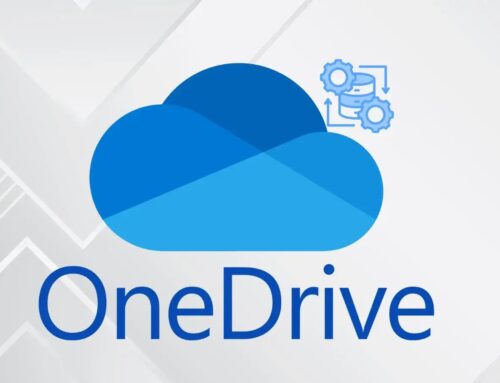
New Phoenix Rowhammer Attack Variant Bypasses Protection With DDR5 Chips
A disturbing new development in the realm of memory-based attacks has emerged, shaking the foundations of assumed security in modern hardware. Researchers have unveiled “Phoenix,” a novel Rowhammer attack variant specifically designed to bypass the sophisticated protections built into cutting-edge DDR5 memory chips. This isn’t just another theoretical threat; Phoenix marks the first successful demonstration of a practical privilege escalation exploit on a commodity system utilizing DDR5 RAM. This breakthrough directly undermines the prevailing belief that DDR5, with its enhanced integrity mechanisms, was impervious to such vulnerabilities. Understanding Phoenix and its implications is critical for any IT professional or security analyst focused on hardware-level security.
Understanding Rowhammer and Its Evolution
Rowhammer is a hardware vulnerability affecting dynamic random-access memory (DRAM). It exploits the physical proximity of memory cells, where repeatedly accessing a row of memory (the “aggressor” row) can cause electrical interference that flips bits in an adjacent, unaccessed row (the “victim” row). This phenomenon, known as Rowhammer-induced bit flips, can be leveraged by attackers to modify crucial system data, bypass security measures, or even gain unauthorized access.
The earliest Rowhammer attacks targeted DDR3 and DDR4 memory, prompting manufacturers to implement various mitigation techniques. These included Target Row Refresh (TRR), which periodically refreshes adjacent rows to prevent charge leakage, and other hardware-level protections. For a time, it was believed that DDR5, designed with more robust error correction codes (ECC) and advanced refresh mechanisms, had effectively mitigated the Rowhammer threat. Phoenix proves this assumption false.
The Phoenix Attack: Bypassing DDR5 Protections
The Phoenix attack meticulously circumvents the existing Rowhammer defenses in DDR5. Researchers exploited specific characteristics of DDR5’s internal architecture and refresh mechanisms. While the exact technical details involve complex timing and access patterns, the core innovation lies in its ability to manipulate DDR5’s internal refresh algorithms and error correction capabilities. It effectively “hammers” memory rows in patterns that overwhelm or bypass the preventive refresh logic, leading to controllable bit flips.
The significance of Phoenix cannot be overstated. By achieving practical privilege escalation on a standard DDR5 system, it demonstrates that even the latest memory technology is susceptible to these low-level, hardware-based attacks. This introduces a new layer of concern for system integrators, cloud providers, and anyone managing critical infrastructure, as software-only mitigations often prove insufficient against such fundamental hardware flaws.
Affected Systems and Potential Impact
Given that Phoenix targets the intrinsic behavior of DDR5 memory, virtually any system utilizing DDR5 RAM could potentially be vulnerable. This includes modern servers, workstations, and even consumer-grade PCs. The primary impact stems from the potential for privilege escalation, allowing an attacker to gain higher access rights than intended, potentially leading to full system compromise. This could manifest as:
- Bypassing sandbox environments.
- Escalating privileges from a low-level user to administrator or root.
- Modifying critical operating system data or security policies.
- Injecting malicious code directly into privileged processes.
While the researchers did not disclose a specific CVE for Phoenix at the time of the announcement, the underlying vulnerability in memory architecture could be conceptually linked to similar hardware-based vulnerabilities. For example, previous Rowhammer attacks like CVE-2016-5693 illustrate the broad category of threats.
Remediation Actions
Addressing a hardware-based attack like Phoenix requires a multifaceted approach, as software patches alone are often insufficient to fully mitigate the risk. Here are actionable remediation steps:
- Firmware and BIOS Updates: Maintain system firmware and BIOS at the latest versions. Manufacturers may release microcode updates or firmware patches that adjust memory controller behavior to counter discovered Rowhammer patterns.
- Operating System Hardening: Implement operating system-level mitigations such as memory randomization (ASLR) and strict memory protection policies. While not a direct counter to bit flips, these can make exploitation more difficult by making predictable memory layouts harder to achieve.
- Memory Scrubbing and ECC: Leverage advanced error-correcting code (ECC) memory where possible. While DDR5 has built-in ECC, Phoenix demonstrates it can be bypassed. However, more robust ECC implementations can still detect and potentially correct some bit flips, making successful exploitation more challenging.
- Regular Audits and Monitoring: Implement robust system monitoring for unusual memory access patterns or unexpected system behavior that might indicate an attempted Rowhammer attack.
- Application Sandboxing: For critical applications, employ strong sandboxing techniques to limit the damage even if a privilege escalation were to occur within a sandboxed process.
- Stay Informed: Continuously monitor security advisories from hardware vendors (CPU, motherboard, and RAM manufacturers) regarding Rowhammer and other memory-related vulnerabilities.
Tools for Detection and Mitigation
While direct detection of a live Phoenix attack can be challenging due to its low-level nature, certain tools and techniques can aid in identifying memory anomalies or potential exploit attempts.
| Tool Name | Purpose | Link |
|---|---|---|
| Memtester | General memory error detection and stability testing. | https://pyropus.ca/software/memtester/ |
| Mprime (Prime95) | Stress testing CPU and RAM to uncover stability issues and potential hardware flaws. | https://www.mersenne.org/download/ |
| Fault Injection Frameworks (e.g., Rowhammer.js) | Research tools for demonstrating Rowhammer effects (not for live detection). | https://github.com/vusec/rowhammerjs |
| Hardware-level Monitoring Tools | Vendor-specific utilities for monitoring memory health and system integrity. Consult your hardware manufacturer. | N/A (Vendor Specific) |
Conclusion
The Phoenix Rowhammer attack variant serves as a stark reminder that even the most advanced hardware components can harbor unforeseen vulnerabilities. The successful demonstration of a practical privilege escalation exploit on DDR5 memory shatters previous assumptions about its immunity to such threats. For IT professionals and security experts, this necessitates a renewed focus on hardware-level security, emphasizing comprehensive patching, robust system monitoring, and a proactive stance against evolving hardware exploitation techniques. The battle against low-level vulnerabilities is ongoing, and remaining vigilant is paramount to securing modern computing environments.





